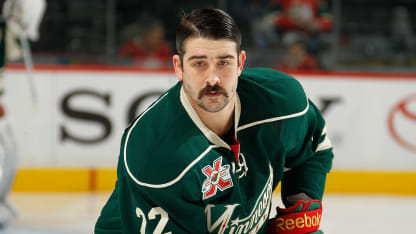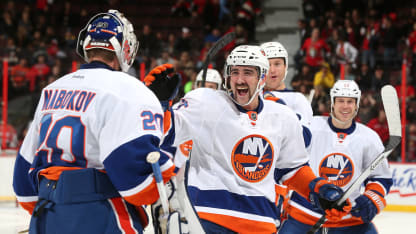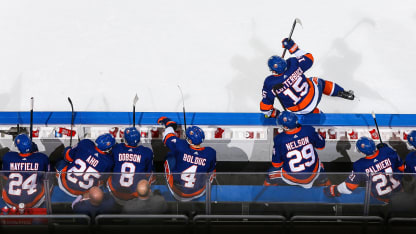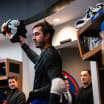A Long Time on Long Island
Clutterbuck was an effective player in his early days with the Wild. He led the league with 318 hits in 2009-10, led again with 336 hits in 2010-11 and finished third (behind Matt Martin) with 288 hits in 2011-12.
He scored a career-high 19 goals in 2010-11, followed by another 15 the following season. He became a capable penalty killer and scored four shorthanded goals in 2011-12, which tied Adam Henrique and Mike Richards for the league lead.
Despite that, Clutterbuck figured his days in Minnesota were likely numbered when (future Isles teammate) Zach Parise and defenseman Ryan Suter signed identical 13-year contracts to play for the Wild in the summer of 2012, as he was set to be a restricted free agent the following year. Clutterbuck played the lockout-shortened 2012-13 season with Minnesota, and assumed he’d be traded to one of the three California teams.
The Islanders were not on his radar when he was back home watching the 2013 Draft to find out that he’d been traded – along with a third-round pick – to the Islanders in exchange for Nino Niederreiter, the fifth-overall pick in 2010. Clutterbuck was not enthused about the destination at first, something that makes him chuckle now after spending a decade on Long Island.
“My first thought was ‘oh my god,’” Clutterbuck said. “I just immediately thought of the Marriott and the concrete slab that the Coliseum was on and thought ‘oh boy, this is going to take some getting used to.’
“Obviously, it doesn’t take very long to travel around a little bit, get to know some different spots around here,” Clutterbuck added. “I quickly fell in love with the place. It’s definitely one of those scenarios where it’s not what you wanted, but probably what you needed.”
Frans Nielsen remembered the day Clutterbuck was acquired a little more fondly. After all, bringing one of the league’s most prolific hitters in-house means not having to play him anymore.
“I still remember the day we traded for him how excited we were because we knew that he could score goals, but we felt how hard and intimidating it was to play against him,” Nielsen said “We knew it was going to be a great asset for our team.”
Clutterbuck’s style and attitude helped contribute to the changing culture on Long Island, according to Nielsen.
“The guy hates losing,” Nielsen said. “You know he's going to bring it. You know he's going to do whatever it takes to win. He competes and he makes guys follow that. You want leaders, you want players in that room that compete.”























